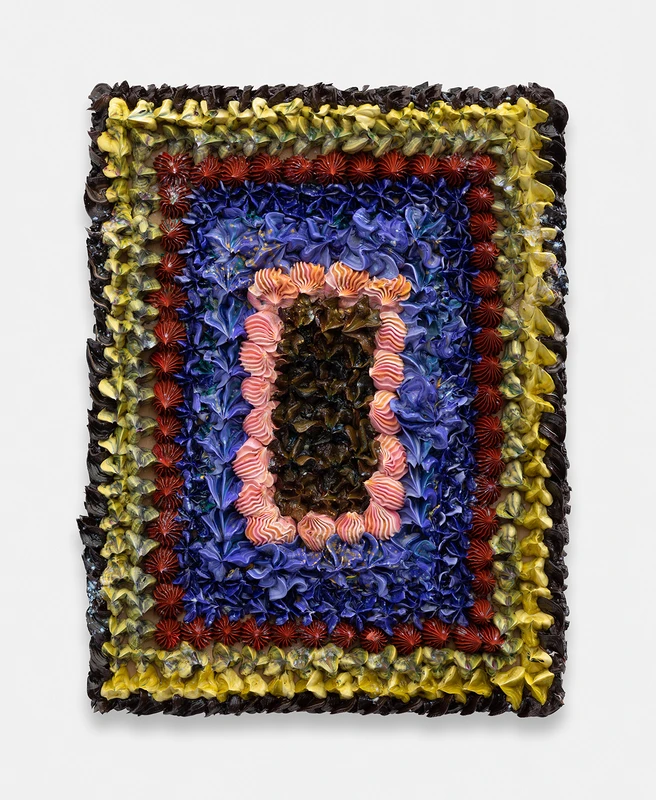Wurly
10 Dec 2025-30 Jan 2026
PV 10 Dec 2025, 6.30-8.30pm


JGM Gallery presents Wurly, an exhibition of small-scale works by twelve contemporary artists living and working in the United Kingdom.
The exhibition’s title, Wurly, is a word which in northern English and Scottish dialects means something small, gnarled or knotted. For the exhibition’s curator, Ralph Anderson, ‘wurly’ conjures an image of an unshakable, squat and skeletal tree, weathering wind and rain in an otherwise barren, moorland landscape. These trees may appear small and imperfect compared to an ancient oak, however, within a landscape they can yield a sublime, often striking image. This context of a windswept world in which few other species thrive transforms the connotation of these trees from that of lowliness to one of majesty. This unlikely transformation brings the nature of beauty into question. Something that is modest and twisted can be an object of beauty depending on the lens it is viewed through, and in what circumstances.
Anderson argues that, in art, beauty is not so much defined by what an image is about (its content) but how it is made (its form). Culturally, an oak may be imbued with more potent symbolism than that attached to a wurly tree, however, the dense and twisted form of the latter has profound effects, meaning that it survives both elemental and temporal change. Anderson uses an example of Renaissance paintings that work from the same allegory but some of which are, perhaps, to be considered more beautiful than others. It is, in Anderson’s view, the materiality of the work – the visible brushstrokes, the play of colour, the texture of the painted surface, layering and line – which give way to meaning.
An interest in and investigation of the primacy of form connects the work of Wurly’s exhibiting artists. There is a paradox that emerges, however, in the creation of hierarchies which give precedence to either form or content as the basis for beauty – a chicken-and-egg conundrum. While form may be, for some artists, their primary preoccupation, inevitably this interest is the result of a thought, idea or concept which becomes a theme that is then physically played out. Or, by working through an artwork formally, an idea or concept is moved from the preconscious to the conscious in the artist’s mind. At this point, the theme of a work can be identified and named. These tensions describe the dialectic of form and content, which is a dynamic and reciprocal relationship. One of Wurly’s exhibiting artists, ceramicist Tom Norris, locates this dialectic within his own practice, referencing the phenomenon, ‘pareidolia’, where he finds themes or images among innately abstract forms in the final stages before a work’s completion.
Wurly brings together artists who engage with a small-scale format in various ways. ‘Small’ works invite close viewing and consideration because of their scale. While small things instinctively may seem insignificant, the works in Wurly ask the viewer to think differently about construction, scale and context. Like particular landscapes give gravity to Anderson’s wurly tree, ‘small’ works can ooze gravity and richness. As Anderson writes, “It’s a great honour to bring together a selection of works by artists that have shown with JGM Gallery in the past. By concentrating on small works from each artist’s discipline, I hope to zone in on the essence of their practices whilst also giving the viewer a snapshot of the variety of different approaches to art and making in the gallery programme over the years. I came across the name, Wurly, unexpectedly when searching for a title and theme to bring such a varied selection of works together. It immediately jumped out, and with it’s emotive description of form and scale, it seemed ideal for my thoughts on the exhibition and ways of looking at the artworks. On further research, I discovered that ‘wurly’ is also the name for a temporary Indigenous Australian shelter, which felt incredibly serendipitous given JGM Gallery’s other programme as a home for First Nations art in London. I hope that the small scale of the artworks in Wurly can intensify and focus the experience, creativity and thought of these artists’ works, and show the economy of material use to great effect.”
Exhibiting artists: Karolina Albricht, Tim Allen, Ralph Anderson, John Ball, Dominic Beattie, Juan Bolivar, Karen David, Benjamin Deakin, Olly Fathers, Daniel MacCarthy, Tom Norris and Alice Wilson.